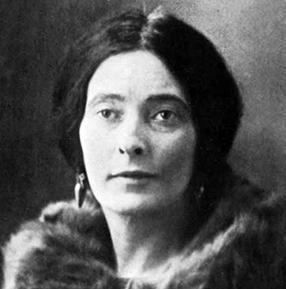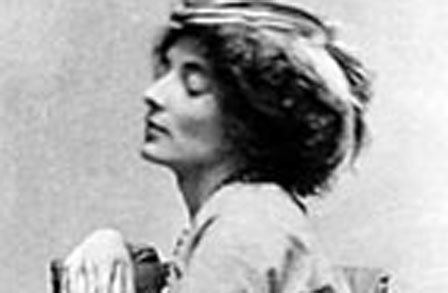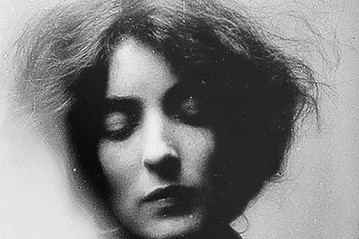Name Mina Loy Movement Modernism, Futurism | Role Artist | |
 | ||
Full Name Mina Gertrude Lowry Born 27 December 1882 ( 1882-12-27 ) London, England Occupation Poet, playwright, novelist, actress, designer Died September 25, 1966, Aspen, Colorado, United States Artwork Consider Your Grandmother's Stays | ||
Mina loy
Mina Loy, born Mina Gertrude Lowry (27 December 1882 – 25 September 1966), was a British artist, poet, playwright, novelist, futurist, actress, Christian Scientist, feminist, model, nurse, designer of lamps, and bohemian. She was one of the last of the first generation modernists to achieve posthumous recognition. Her poetry was admired by T. S. Eliot, Ezra Pound, William Carlos Williams, Basil Bunting, Gertrude Stein, Francis Picabia and Yvor Winters, among others.
Contents
- Mina loy
- Biily corgan mina loy m o h lyrics
- Loy and Arthur Cravan
- Feminist Manifesto
- Return to Europe and New York
- Later life and work
- References

Biily corgan mina loy m o h lyrics
Loy and Arthur Cravan

Disillusioned with the macho elements in Futurism and its move towards Fascism, as well as desiring a divorce from her husband Stephen Haweis, Loy left her children with a nurse and moved to New York in 1916, where she began acting with the Provincetown Players. She was a key figure in the group that formed around Others magazine, which also included Man Ray, William Carlos Williams, Marcel Duchamp, and Marianne Moore. She also became a Christian Scientist during this time. Loy soon became a leading member of the Greenwich Village bohemian circuit. She also met the 'poet-boxer' Arthur Cravan, self-styled Dadaist and fugitive from conscription. Cravan fled to Mexico to avoid the draft; when Loy's divorce was final she followed him, and they married in Mexico City. Here, they lived in poverty, and years later, Loy would write of their destitution.

Once Loy became pregnant, the couple realised they needed to leave Mexico. A few months later, Cravan set sail for Buenos Aires in a small yacht and disappeared without a trace. The tale of his disappearance is strongly anecdotal, as recounted by Loy's biographer, Carolyn Burke. Their daughter was born April 1919.
In a chapter of her memoir entitled "Colossus", Loy writes about her relationship with Cravan, who was introduced to her as "the prizefighter who writes poetry". Irene Gammel argues that their relationship was "located at the heart of avant-garde activities [which included boxing and poetry]". Loy draws on the language of boxing throughout her memoir to define the terms of her relationship with Cravan.
Feminist Manifesto
In 1914, while living in an expatriate community in Florence, Italy, Loy wrote the Feminist Manifesto, for which she is perhaps best known today. The manifesto begins with a direct call on women:
"The feminist movement as at present instituted is Inadequate. Women if you want to realize yourselves-you are on the eve of a devastating psychological upheaval-all your pet illusions must be unmasked—the lies of centuries have got to go—are you prepared for the Wrench—? There is no half-measure—NO scratching on the surface of the rubbish heap of tradition, will bring about Reform, the only method is Absolute Demolition. Cease to place your confidence in economic legislation, vice-crusades & uniform education-you are glossing over Reality. Professional & commercial careers are opening up for you—Is that all you want ?"
A galvanising polemic against the subordinate position of women in society, the short text remained unpublished in Loy's lifetime.
Return to Europe and New York
Loy would return to Florence and her other children. However, in 1920 she would set out for New York, hoping to find Cravan, unable to accept his death. Here she returned to her old Greenwich Village life, perusing theatre or mixing with her fellow writers. She would mingle and develop friendships with the likes of Ezra Pound, Dadaist Tristan Tzara, and Jane Heap. In 1923, she returned to Paris and, with the backing of Peggy Guggenheim, created a market for lampshades, glass novelties, paper cut-outs and painted flower arrangements. Her first book, Lunar Baedecker was also published that year. She picked up old friendships with Djuna Barnes and Gertrude Stein. In the early 1930s, while still living in Paris, Loy began writing Insel, a kunstlerroman that fictionalises her friendship with German surrealist painter Richard Oelze, a friendship begun in part because Loy was the Paris agent for her son-in-law Julien Levy's New York gallery. Loy drafted and revised Insel until 1961, when she unsuccessfully sought its publication. The novel was finally published by Black Sparrow Press in 1991, edited by Elizabeth Arnold.
Later life and work
In 1936, Loy returned to New York and lived for a time with her daughter in Manhattan. She moved to the Bowery, where she became interested in the Bowery bums, writing poems and creating found art collages on them. In 1946, she became a naturalised citizen of the United States. Her second and last book, Lunar Baedeker & Time Tables, appeared in 1958. She exhibited her found art constructions in New York in 1951 and at the Bodley Gallery in 1959. In 1953, Loy moved to Aspen, Colorado, where her daughters Joella and Fabienne were already living; Joella, who had been married to the art dealer of Surrealism in New York, Julien Levy, next married the Bauhaus artist and typographer Herbert Bayer. In Colorado, Mina Loy continued to write and work on her junk collages up to her death at the age of 83, in Aspen.
